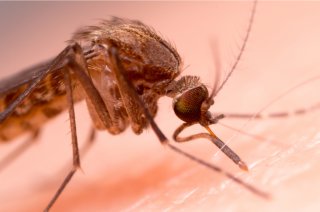
Project
Muggenradar
“Many of us can be bothered by that noisy mosquito during the night. An itchy, but harmless swelling may be the result the next day. However, as a result of our changing climate and environment, it becomes more likely that these mosquitoes can also transmit diseases in the future. Knowing when, where and which species of mosquitoes are active is key information for assessing disease risk. Observations and reports of the general public collected via citizen science can be of immense value in this regard.”
A snapshot of the project
Routine surveillance of invasive and native mosquito species in the Netherlands is carried out by the Centre for Monitoring of Vectors (CMV, part of NVWA). For that purpose, mosquito traps are being used and complemented with sampling of aquatic habitats. How representative trap collections are for host-vector contact is unclear, but by collecting additional data on the level of mosquito nuisance experienced and on actual mosquitoes caught indoors via citizen science, we aim to provide further insight into mosquito exposure.
The overall goal of this project is to answer repeated questions about mosquitoes and the nuisance they cause from the community. As it is unclear where and how often this nuisance occurs and which species are responsible for it, WUR decided to develop research that would answer the following questions:
- Where in the Netherlands can we find mosquitoes?
- What level of nuisance do these mosquitoes cause throughout the year?
- What risk do these mosquitoes pose in terms of disease transmission?
- How can we prevent nuisance, and how can we reduce risks of disease transmission?
Once or twice per year, citizens are specifically requested to look for mosquitoes in their environment and send their killed mosquitoes to the laboratory for further investigations, including genetic analyses and pathogen detection. In addition, via newsletters and other outlets, citizens are asked to weekly report the level of nuisance that they have experienced on a given day or during a certain period. All information provided in this way will be linked to variability in weather (e.g., heat waves, warm and wet winters etc.) and other parameters of interest (e.g., the presence of wetlands, location within the Netherlands etc.). In the future, we hope to integrate our work with systems that can automatically identify mosquitoes based on pictures or recorded sounds.
The results of the project
The high visibility of the Muggenradar project also ensures that Dutch citizens are better educated about the role and responsibility they have themselves in reducing mosquito breeding places. Moreover, through regular messages via the media, people are better informed about the biology of mosquitoes and the possible risks they pose in terms of disease transmission.
Ultimately, with the reports on nuisance and presence of mosquitoes in the domestic environment, the Muggenradar will contribute to the development of mosquito-borne disease risk models. Also, with the results of Muggenradar, we get a better understanding of how people deal with mosquitoes in their environment and daily life. That will result in better targeted messages to control mosquitoes and reduce nuisance.